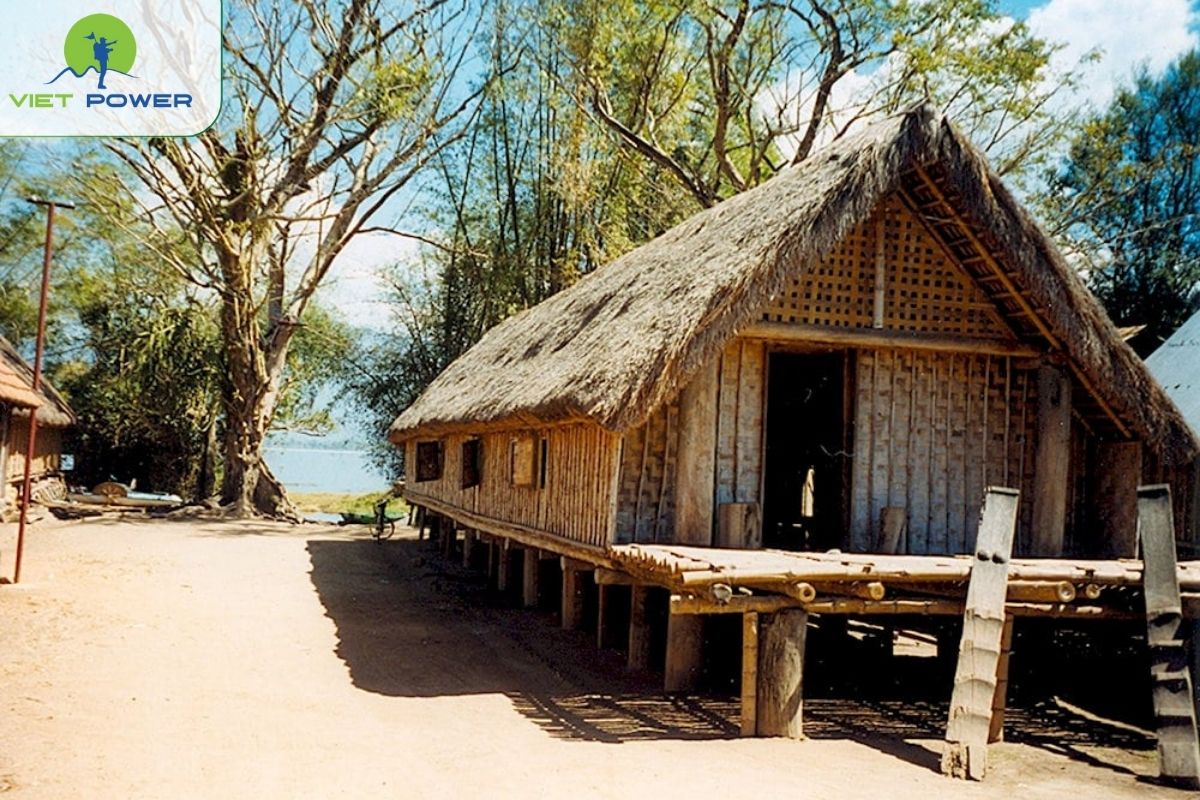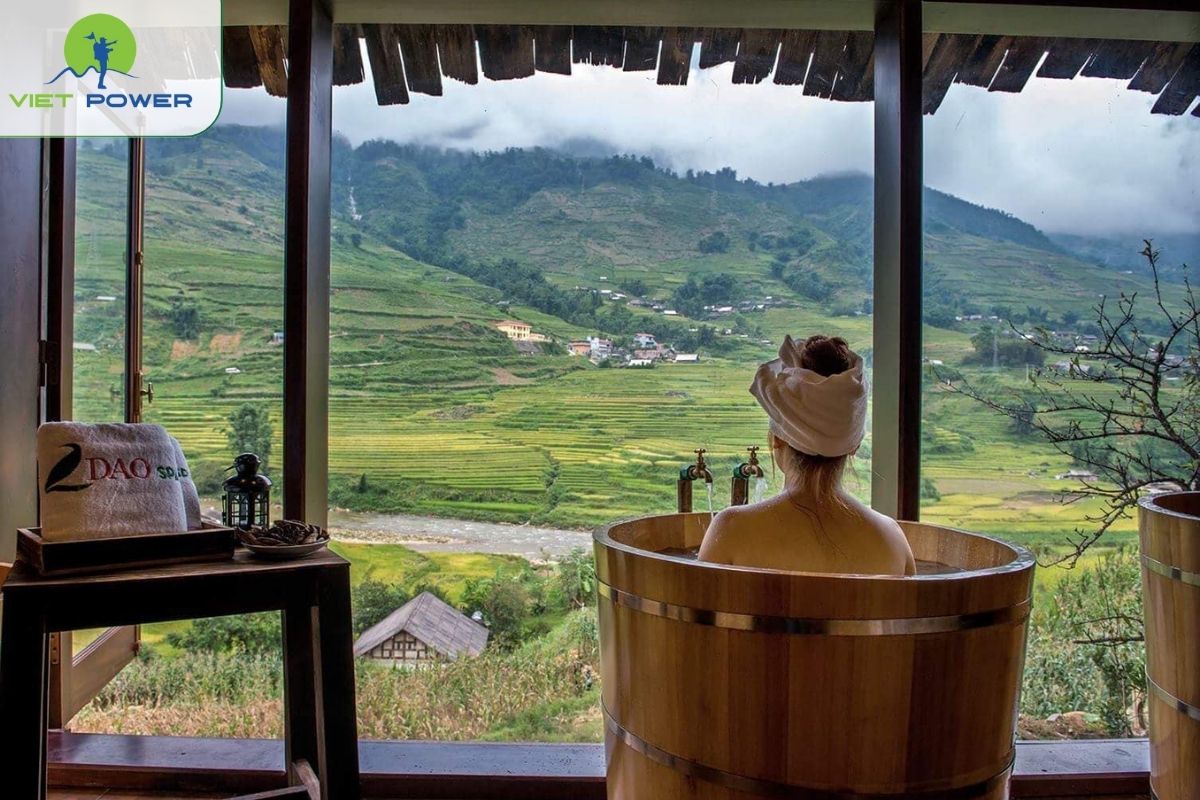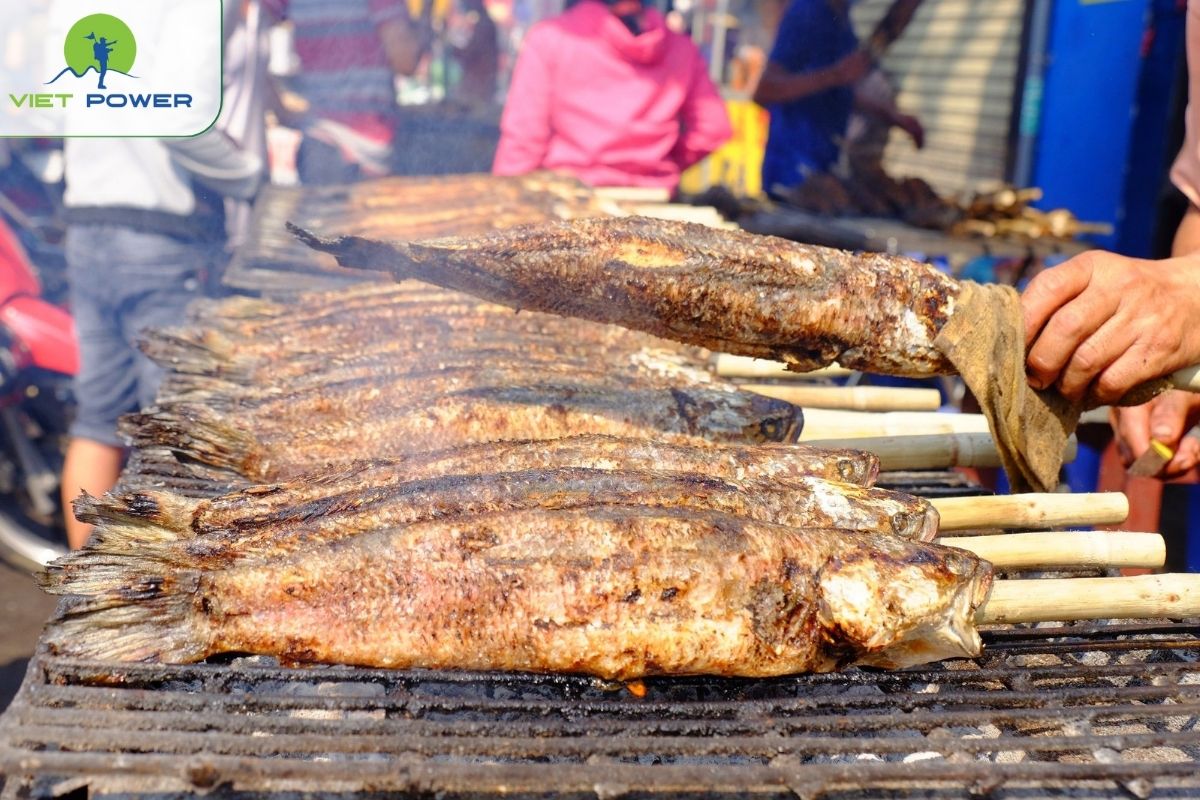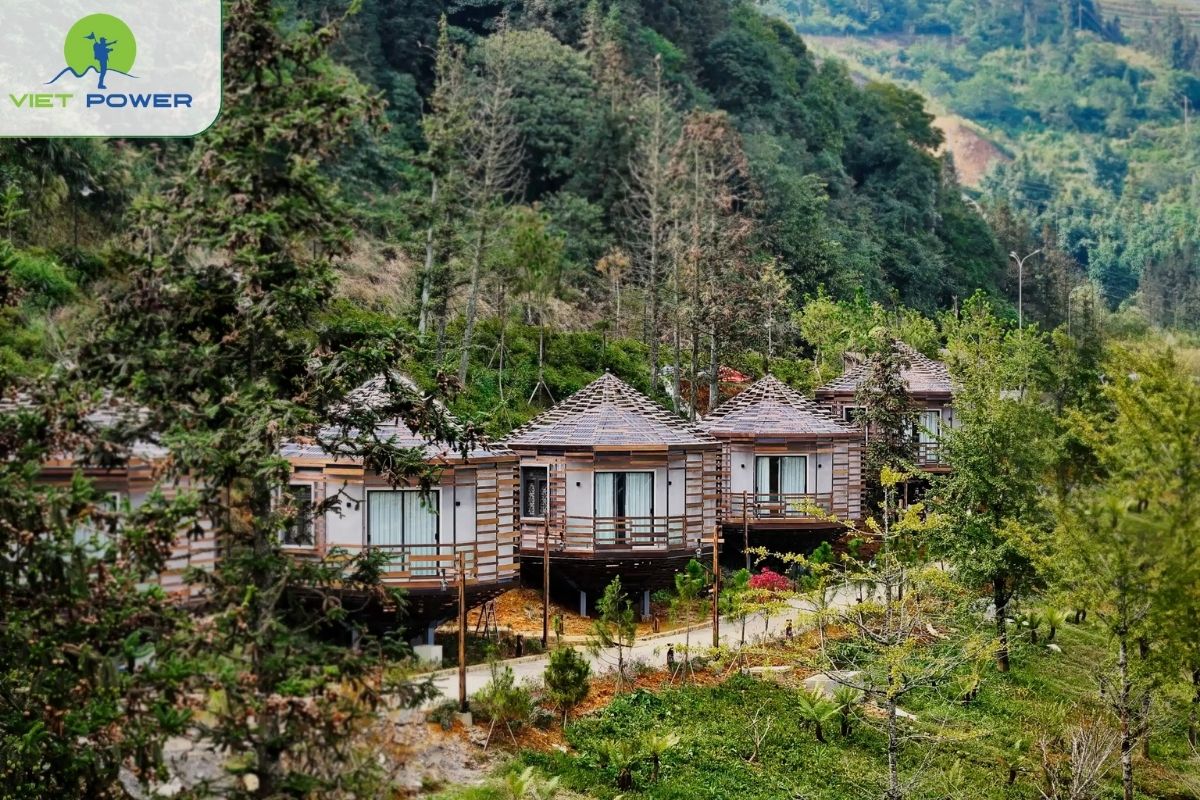With Vietpower Travel, your journey to Ta Van Village Sapa becomes a genuine escape into the calm beauty of Northern Vietnam. Nestled in the Muong Hoa Valley, this Giay ethnic village Sapa enchants travelers with rice terraces, friendly locals, and rich traditions. From trekking Lao Chai Ta Van to staying in a cozy homestay Ta Van Valley, visitors can uncover What’s special about Ta Van Village? — where ancient culture and nature live side by side.
Ta Van Village Sapa sits about 12 kilometers southeast of Sapa Town, within Ta Van Commune in the peaceful Muong Hoa Valley, Lao Cai Province. The village lies between the majestic Hoang Lien Son Mountains and the calm Muong Hoa Stream, which brings water to the valley’s famous rice terraces.
Within the same commune is Seo My Ty Lake – Vietnam’s highest artificial lake, located 1,677 meters above sea level. Its *emerald-green surface remains clear year-round, reflecting clouds and mountain peaks like a mirror. Few travelers know about this hidden natural attraction.
To reach Ta Van, follow Muong Hoa Road through Lao Chai Village and cross a small red bridge that marks the village entrance. The route is scenic and easy to travel, surrounded by rice fields and ethnic homes — a beautiful introduction to the charm of the Sapa Villages.
Ticket revenue is used to maintain roads, bridges, and cultural preservation projects that support the local Giay and H’Mong communities.

Ta Van Giay Hamlet is the oldest settlement in the area, home to the Giay ethnic group for more than three centuries. The founding families — San, Vang, and Lu — were the first to build terraced fields and establish the farming traditions that still define the valley today. Life here follows a calm rhythm of rice cultivation, weaving, and seasonal festivals that preserve the Giay people’s cultural identity.

Before it was called Ta Van, the area was known as “Muong Va,” meaning “arm span.” According to a local Tay legend, the name symbolized the unity of villagers protecting their homeland together.
Nearby stands Pom Mo Da Tay Hill, believed to be the burial site of an ancient Tay woman who once watched over the valley. This quiet spot holds spiritual meaning for locals and remains one of Ta Van’s least-known yet most touching cultural landmarks.
Traditional Giay houses are built following feng shui principles to maintain harmony with nature.
Each house features a po mu wood altar in the main room, symbolizing purity and ancestral respect. The simple wooden design keeps interiors warm in winter and cool in summer, showing how the Giay combines practicality with deep spiritual values.

|
|
|
|
|
|
|
|
|
|
|
|
|
|
|
|
|
|
|
|

The most scenic route in the valley stretches about 7–12 kilometers, taking 2–3 hours to walk. The trail winds through bamboo forests, rice terraces, and small ethnic hamlets.
On this route, visitors can stop by the Sapa Ancient Stone Field — an 8 km² archaeological site with over 200 engraved stones that may date back 5,000 years. Researchers believe these carvings are connected to the Dong Son culture, making it one of the oldest heritage sites in Northern Vietnam.

Built over two decades ago, the May Bridge is a simple yet charming bamboo suspension bridge tied together with forest ropes and wooden planks. From here, travelers can admire the soft flow of the Muong Hoa Stream below and the panoramic landscape of the valley — a must-visit for anyone exploring the Sapa Villages.

Two of the most well-known traditional homes are the Hoang Din House and the Lo A Muc House, both dating back to 1934. These houses are made entirely from local wood and clay, showcasing the Giay people’s ability to live in harmony with their surroundings. Step inside to see simple interiors, a warm hearth, and a wooden altar dedicated to the ancestors.

After a long trek, unwind with a traditional Red Dao herbal bath — a centuries-old wellness practice made from 10–20 medicinal plants such as cinnamon, lemongrass, and wormwood. The mixture is carefully prepared by local women using recipes passed down through generations. It helps ease muscle tension and improves circulation while giving travelers a glimpse into ethnic healing culture.

In Ta Van, Giay artisans are known for their craft skills, especially in hand-weaving brocade and creating delicate silver jewelry. Visitors can join short workshops to learn basic weaving or metalwork techniques and purchase handcrafted souvenirs directly from ethnic cooperatives — a meaningful way to support local families.

Every visit to Ta Van feels incomplete without tasting its mountain dishes. Try Thang Co (a slow-cooked horse stew), grilled stream fish, sticky rice in five colors, and homemade corn wine. Dinner is often shared around a fire with locals, filled with laughter, folk songs, and storytelling — the kind of warmth that defines the village’s hospitality.

|
|
|
|
|
|
|
|
|
|
|
|
|
|
|
|
|
|
|
|
|
|
|
|
|
|
|
|
|
|
|
|
|
|
|
|
|
|
|
|
|
|
|
|
|
|
|
|
|
|

|
|
|
|
|
|
|
|
|
|
|
|
|
|
|
|
|
|
|
|
|
|
|
|

There are several convenient ways to reach Ta Van Village Sapa, depending on your travel style and comfort level:
Ta Van offers a calmer and more authentic atmosphere than Cat Cat or Lao Chai. It’s home to the Giay, H’Mong, and Red Dao people, where travelers can experience traditional life and homestays among peaceful rice terraces — a quieter alternative to other Sapa Villages.
Yes. Most Ta Van homestays, such as Ginn’s Homestay or Comlam Eco House, welcome foreign guests with clean rooms, local meals, and cultural activities like weaving or trekking.
The trek is 7–12 km, taking 2–3 hours through terraced fields, bamboo forests, and ethnic hamlets — ideal for light trekking and photography.
Yes. The area is safe, quiet, and great for family stays. Kids can explore nature, meet locals, and enjoy open spaces while parents relax in a serene setting.
Seo My Ty Lake is Vietnam’s highest man-made lake (1,677 m), with green water reflecting the mountains year-round. Nearby, the Ancient Stone Field spans 8 km², featuring over 200 carved stones believed to be over 5,000 years old.
A visit to Ta Van Village is more than a scenic retreat — it’s a cultural experience that connects travelers to the heart of Northern Vietnam. Whether you seek trekking adventures, ethnic heritage, or quiet mountain moments, Ta Van captures it all in its timeless beauty. Plan your next journey with Vietpower Travel and explore more destinations under the Vietnam Tourist Attractions category to uncover the country’s most authentic treasures.